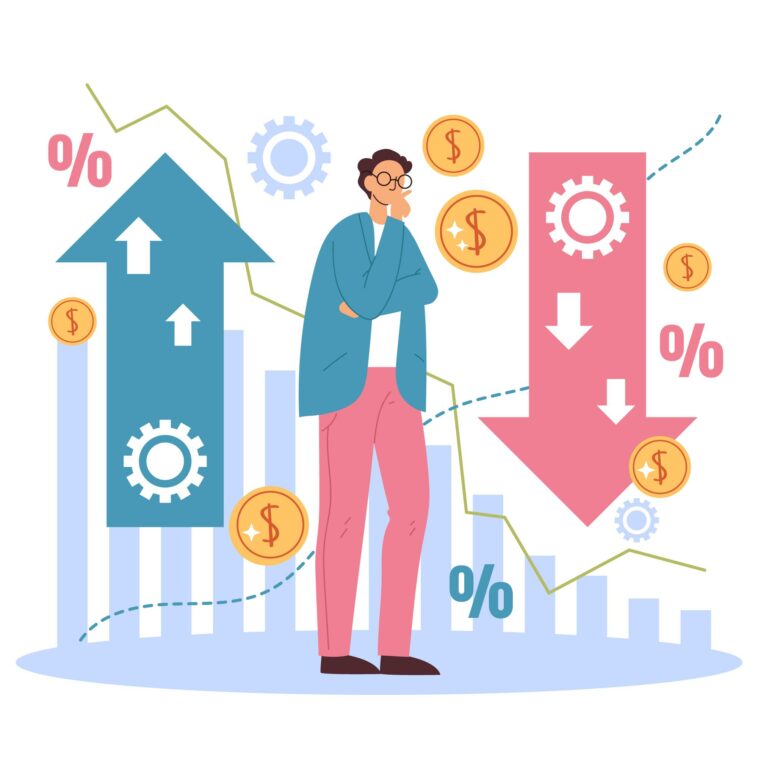Interest rates: two simple words that have the power to shape economies, influence financial decisions, and direct the flow of money around the world. Much like the heart in a human body, interest rates pump lifeblood into the global financial system, affecting everything from the price of our homes to the returns on our savings. So, what makes this seemingly straightforward percentage so pivotal? Let’s embark on a journey to unravel the intricacies of interest rates and their profound impact on our economic lives.
Setting the Foundation: What are Interest Rates?
At its essence, an interest rate is the cost of borrowing money. When you take out a loan, you’re expected to pay back the principal amount plus an additional amount as interest. Conversely, when you deposit money in a savings account, the bank pays you interest as a reward for allowing them to use your funds. In both scenarios, the interest rate is a percentage representation of that cost or reward.
Who Holds the Reins? Determining Interest Rates
While market dynamics play a role, central banks, like the Federal Reserve in the U.S. or the European Central Bank in the Eurozone, are key players in setting base interest rates. These rates affect the general direction of interest rates throughout an economy. Factors influencing their decisions include:
- Inflation: A primary objective for many central banks is price stability. When prices rise too quickly, central banks may hike interest rates to cool down the economy.
- Economic Growth: In times of recession or economic downturn, central banks might lower interest rates to stimulate borrowing and investment.
- Employment: High unemployment can lead to rate cuts, aimed at encouraging businesses to borrow, invest, and ultimately hire.
- External Shocks: Unexpected events, like global pandemics or financial crises, can influence rate adjustments.
Effects on the Wider Economy
Shifts in interest rates can send ripples (or waves) throughout an economy:
- Borrowing Costs: When rates rise, borrowing becomes more expensive, potentially slowing down consumer spending and business investments.
- Asset Prices: Low rates can lead to higher asset prices, as investors search for returns in stock markets or real estate.
- Exchange Rates: Interest rates can influence the strength of a country’s currency, impacting international trade.
- Savings: High rates might encourage savings, as the returns on savings accounts become more attractive.
Fixed vs. Variable: Navigating Personal Interest Rates
On a personal level, understanding the difference between fixed and variable interest rates can profoundly impact financial decisions:
- Fixed Rate: This rate remains unchanged for the life of a loan. It offers predictability, safeguarding you from potential rate hikes in the future.
- Variable Rate: Tied to an index rate (like a central bank’s base rate), a variable rate can fluctuate. While it might start lower than fixed rates, it carries the risk of rising in the future.
Global Perspectives: Negative Interest Rates
In recent years, some countries have ventured into the once-unthinkable realm of negative interest rates. In this scenario, banks are charged for holding money with the central bank, and in some cases, depositors might pay banks to hold their savings. The objective is to encourage lending and spending. Countries like Japan and Denmark have dipped their toes into negative territory, leading to global debates on the strategy’s effectiveness and long-term impacts.
Conclusion
Interest rates are more than mere numbers. They are powerful tools shaping economic landscapes, dictating the tempo of financial markets, and influencing everyday decisions. As consumers, investors, or simply curious minds, understanding the dynamics of interest rates empowers us to make informed choices, anticipate market movements, and navigate the complex symphony of global finance. So, next time you hear about a shift in rates, remember: you’re witnessing the heartbeat of the financial world in action.




